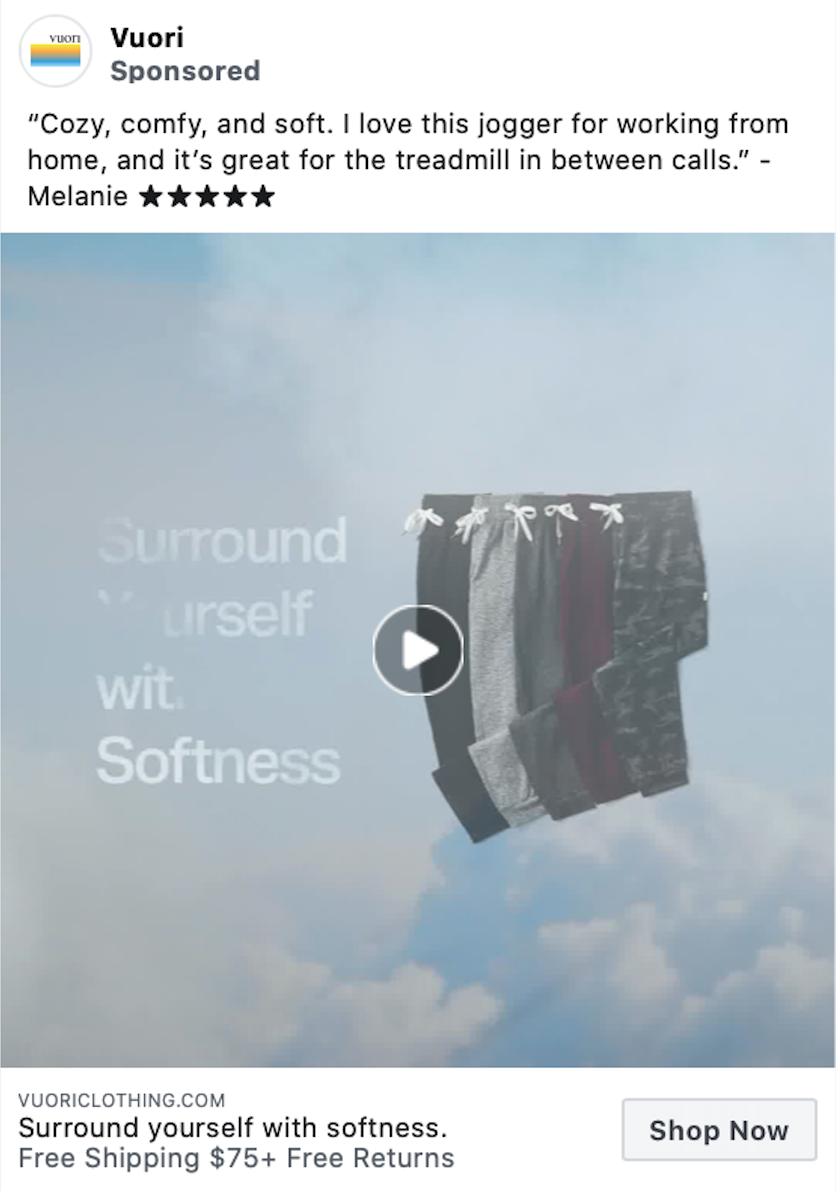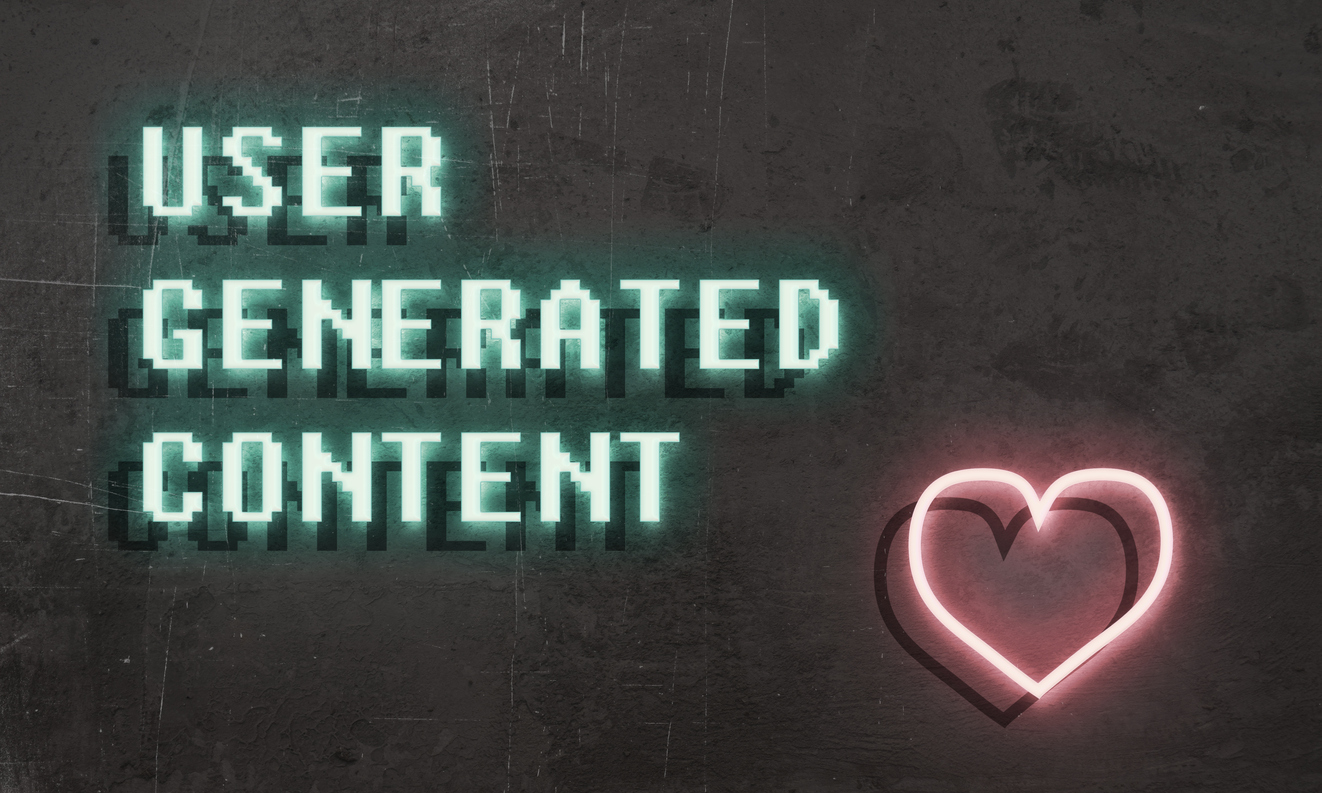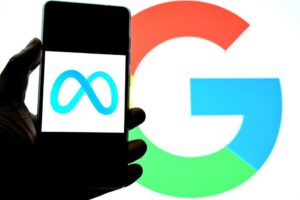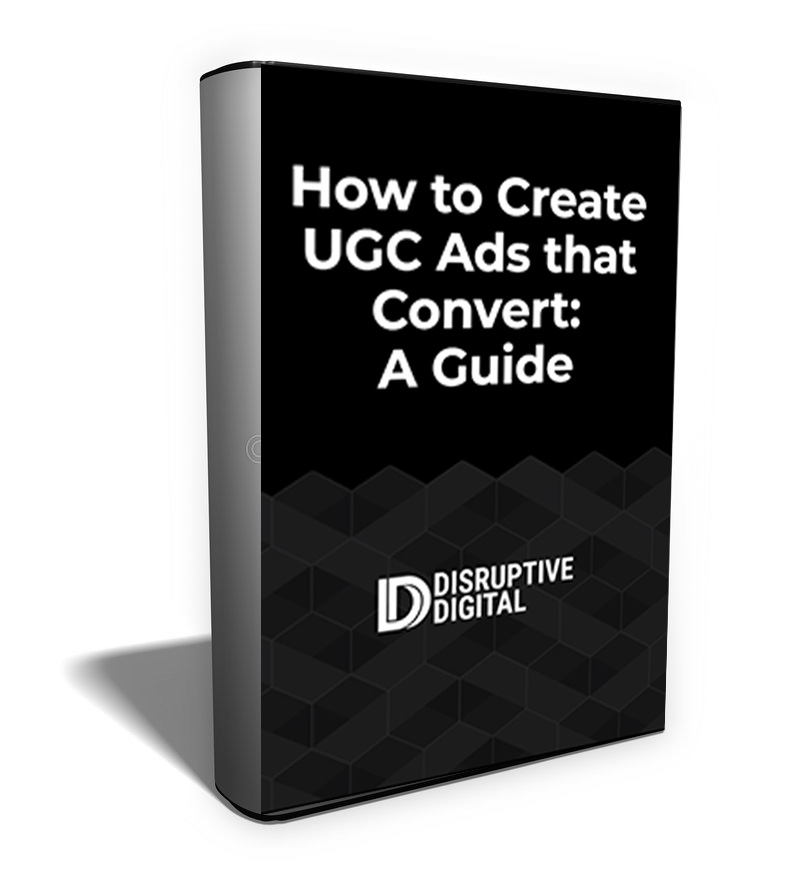Ads that feature user-generated content (UGC) in the form of reviews, images, and videos can drive high-conversions. This is a go-to industry best practice that plenty of advertisers and businesses are using to attract clicks and sales.
There’s something that some are forgetting, however. Not all UGC is created equal, especially since it’s the one type of creative that marketers can’t fully control. You can’t make users submit reviews, pictures, and videos that align with your brand messaging and fit into an advertising campaign.
You can, however, certainly take steps to help drive that outcome.
In this post, we’re going to look at how you can create a strategic storytelling framework to get great UGC Facebook ads.
Why UGC Matters In Advertising
Customers are savvier than ever before when it comes to advertising practices. They’re more media-literate and aware of marketing now than they used to be, so it’s no surprise that most consumers have a natural distrust of marketing materials.
User-generated content is the natural solution here, because while customers may not trust what you have to say about your own brand, they’re inclined to trust what their peers have to say about you. This can help you attract more customers to scale quickly. There’s plenty of data to back this up, including the following:
– 92% of consumers say they trust UGC more than traditional, glossy advertising (Nielsen)
– Mobile-shot creatives have a 63% chance of outperforming studio-shot creatives for purchases, checkouts, and app-installs (Facebook)
– Consumers find UGC 9.8x more impactful than influencer content, and 79% say that it “highly” impacts their buying decisions (Stackla)
– 31% of consumers surveyed said that UGC ads were more memorable than “traditional” ads (Junkin Media)
Why “Just Any” UGC Isn’t Enough On Its Own
UGC can be overwhelmingly effective when added to paid social campaigns, but the key word here is “can.” It isn’t enough to simply pluck a review or user-created image out of the mix, slap it onto an ad, and call it a day. While you can still get some conversions with this strategy, you’ll see the most significant results with high-quality, story-driven UGC.
A review attached to a brand-created video like in the example below is a good start, but it doesn’t open the door to the full potential story-focused UGC video ads can offer.

UGC alone isn’t enough, because it’s only a type of creative. You’ll still need to craft videos that tell a story capable of driving someone to convert.
In order to create these ads, you either need to do one of the following:
- Direct your users to create this type of content themselves
- Hire creators who fit your customer persona to make videos on your behalf
Because it gives you more control while still providing a strong appeal of authenticity, we often recommend opting for the second route. You’re able to provide clear directions for what you’re looking for, and the more direction you can give creators, the more likely it is that you’ll get footage that can create a compelling ad.
You would never go into a studio-shot creative session without a strategy and a script; the same should be true when mapping out UGC-styled creatives.
How to Get Better UGC from Users & Creators
Getting “better” UGC for your paid social campaigns will require collaboration between the brand and the user and creator, so choosing an enthusiastic customer, influencer, or ambassador who is willing to work with you is a good choice.
Let’s take a look at what’s involved in the process.
Consider the Strategy
Before you ever start writing a script and long before you start filming, you need to consider the strategy behind the campaign you want to create. Do the following:
– Define the situation. Who does your product or service help, and how and when does it help them? Who are the specific audience segments who use your product or service, and why would they need it? Break down different audience niches and use cases separately.
– State the problem. What specific problem does your product solve for each audience niche, and how does it make their life better? This is more important than how a product looks or even it’s features; what are the benefits?
– Demonstrate the process. How does your product solve their problem, or how can it improve their lives? How does it work, and what does your product actually do?
– Evaluate the solution. What has been the end result of using your product for the user you want to create UGC? How does that make them feel, and how has it impacted their lives?
Collaborate with the Creator
After you’ve analyzed your current situation and focused in on pain points, impact, and audience niches, the next step is to convert that into a script and shot list of instructions. You’ll give these to the creator.
Specificity is best. The more specific you are, the more likely you are to receive what you want. Instead of simply asking to “talk about how great our product is,” you’ll receive better results if you say “Can you give one example of how our security system kept your family safe?” or “What changes have you noticed in your dog since you switched to our food?”
Don’t be afraid to ask them to send in multiple video clips going over different things, but do let them know up front what you hope to see.
When writing a script, you’ll want to do the following:
– Consider who the user is, and where and when they’re filming the video. Set the scene for the creator of where the video should be shot. If you’d rather have a video outside of kids running in a yard instead of inside quietly coloring, that’s an important detail.
– Provide instructions about the problem. Ask them to both state and show the problem, and then describe the product and how it has helped with said problem in your life.
– Get a few shots of issues they were having that the product can alleviate. Demonstrating the problem and visualizing it can create higher-converting ads.
– Show the product to the camera, stationary and in-use. Showing how it works is a crucial part of the process.
– Highlight the best features. Explain the features that you want the user to highlight and what makes your product different. Features should lead into benefits, letting viewers know why this product will make a difference.
Shoot the Content
After you’ve written up specific instructions for each individual audience niche, send them to the creator. You want them to both state and show how much better their life is with your product or service. This can be done separately or simultaneously.
These are the core elements:
– State why you love this product or service.
– Show the results of using the product or service.
– Give a call to action to the potential customer to take action.
With this framework, you’ll receive engaging UGC from creators that actually tell a story that is capable of driving a high-volume of sales.
3 Tips to Get The UGC Facebook Ads You Want
To receive UGC that effectively captures powerful stories that explain how your product or service can benefit users, following the steps above is essential. We also recommend taking the three following steps:
– Provide creators with filming requirements. Be specific about what you need, like whether you want vertical and/or horizontal shots. If someone sends in a horizontal video, it’s no longer a good fit for Stories ads and mobile video, for example.
– Make sure they film with proper lighting. You can advise them on what this would entail, and even send proper lighting systems to them if needed.
– Don’t be afraid to compensate users. Because you’re asking your customer for more than just a shot of them using your product and you’re providing specific guidelines, you should give them more in return. This could be a free product, a gift card, or even the always-popular cold hard cash.
– Think through different ways to create your video. Once you’ve received your video clips from the user, think about how you want to edit it to tell the most powerful story. You can, for example, start with the opening of the product, do a split screen before and after set up, or start right with the customer problem. The first 3-5 seconds of the video are crucial, so test out different combinations in the opening scene to get their attention.
Final Thoughts
User generated content ads are effective at all stages of the funnel, including when used on cold audiences.
User-generated content is valuable across all social platforms and can supercharge your paid social marketing channels. UGC and testimonials that are high-quality are crucial building blocks that can lead to trust, brand awareness, conversions, and higher-than-average order values.
As a result, strong UGC ads can be a game changer for brands, especially since you can use them both for your paid social campaigns to drive sales at scale. Investing in them is well worth the effort, even if it takes more time than simply using what you already have.
Need help with scaling your paid social ads using UGC creative? Or want to connect with our UGC content creation partner BeeRoll? Get in touch with us here.






